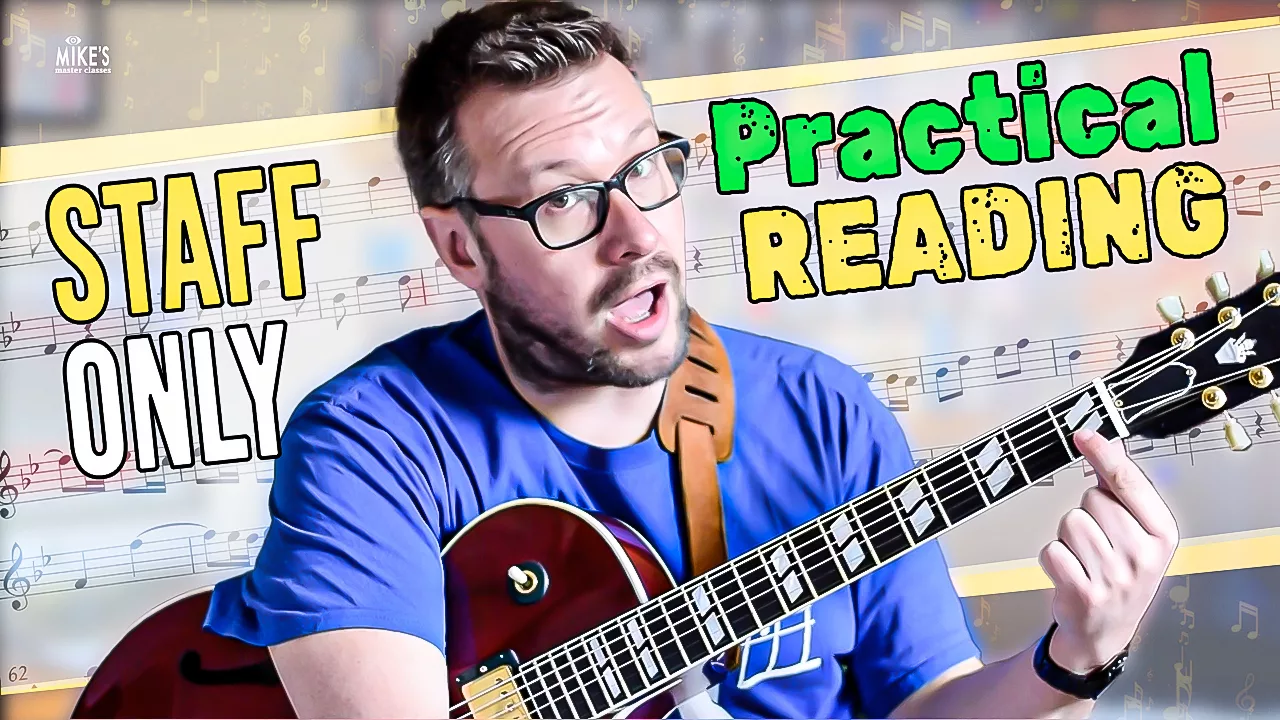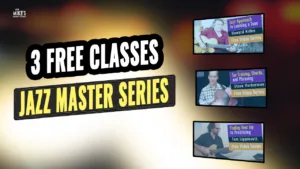Outcome – Improve reading from the treble staff.
Q: What do you call two guitarists reading the same line?
A: Counterpoint.
Q: How do you get a guitarist to turn down?
A: Give them the sheet music.
…and so on!
We’ve all heard the jokes, and it’s true that the guitar can be a difficult instrument to read on. That being said, though, it needn’t be the headache it’s often made out to be, and there’s certainly no reason why a functional level of single-line reading should be any harder for guitarists to acquire than other instrumentalists.
It should go without saying that learning to read requires a big pile of sheet music and a fair amount of patience. Some notated material is included here, but you’ll need plenty more – you can’t learn to read from a tutor video alone. Nevertheless, a bit of friendly advice can go a long way to making sure that we’re doing this in a way that’s as effective and efficient as possible – that’s exactly what I’m trying to provide in this class.
Over the years, I’ve noticed that some of the existing reading methods for guitar treat the instrument as though it were a trumpet. They seem to reserve the upper registers for advanced study, and prefer to take the student gradually through multiple L.H. positions, from the bottom of the instrument up.
In the long term this may well be the right strategy but, to me, it’s always seemed a slightly topsy-turvy way to get started, particularly for electric guitarists looking to eventually play single lines in the jazz style. In this session, therefore, I start by sharing what I’ve found to be the most practical way to look at the instrument, to make the fastest possible progress. From there, we move onto various other aspects of the process.
In the full 1 hour and 25 minutes of class, we:
Establish an order of priority for learning the fret board, based purely on what is most practical.
Identify the best kinds of sheet music for guitarists to seek out.
Examine an ingenious method for rhythmic recognition, used for many years in classical music pedagogy.
Play a Baroque canon in two different tempos.
Examine the difference between guitar pitch and concert pitch, and use this to our advantage.
Explore the concept of ‘quick study’, and the various ways that our wider knowledge of the guitar can help us when it comes to reading.
Employ different techniques for sharpening up our pitch recognition.
Review some of the existing literature on the subject, including some unusual ways to use the classic texts.
Reflect generally about the particular challenges of reading on guitar and why it’s worth the effort to tackle them.
This time, the class includes a 40-page PDF book, referenced throughout with captions, synchronized on-screen notation, and multiple camera angles during complete performances.
In terms of level, if you’re already reading Charlie Parker transcriptions etc. there may not be very much here for you this time. However, if you’ve made start on your reading but are finding it slow going, or if you have always wanted to learn but never got around to it, this material should be of assistance.
Sub-topic 1 Creating a ‘road map’ that prioritizes the most practical areas of the fret board.
Sub-topic 2 Learning a technique for recognizing rhythmic shapes.
Sub-topic 3 Connecting our wider knowledge of the guitar to the task of reading.
Class Categories:
- Chord Voicings
- Practicing
- Rhythm
- Technique
INTERMEDIATE / BEGINNER












Great Course!
Very practical, well-designed, full of information and reference to good materials! Thank you Jamie!!
by panthojon